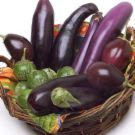Certain foods reduce inflammation, while others raise it. What to eat, what to avoid
Inflammation, normally part of a healthy immune response, is increasingly thought to play a leading role in encouraging a number of major killers, including cancer, diabetes, heart disease, stroke, and Alzheimer's. Dangerous chronic inflammation occurs when the immune system stays turned on and starts attacking healthy cells and tissues-triggering, say, cancer-causing genetic mutations or the bursting of artery plaque. What you eat, though, helps determine how much inflammation you produce. Certain foods promote it, while others are inflammation-fighting superstars, says nutritionist and family physician Ann Kulze, author of Dr. Ann's 10-Step Diet. Some recommendations:
GO FOR ...
Omega-3 fats. These are among the most potent anti-inflammatory foods. Best sources: fatty fish like salmon and tuna; walnuts and other nuts; flaxseed; and canola oil.
Colorful produce. Red onions, tomatoes, broccoli, red grapes, berries, and oranges all are packed with chemicals called flavonoids that have anti-inflammatory properties.
Herbs and spices. Ginger and turmeric, either dried or fresh, are among the most healthful spices. For herbs, sprinkle on some fresh rosemary.
Chocolate and wine. Red wine has anti-inflammatory chemicals like resveratrol. Dark chocolate-look for 70 percent or higher cacao-protects against inflammation, and research suggests that hot cocoa does too.
CUT BACK ON ...
Omega-6 fats. They trigger the body to produce pro-inflammatory chemicals. Oils rich in omega-6 fats include corn, safflower, and vegetable oils; mayonnaise; and many salad dressings.
Trans fats. They're disappearing from packaged foods as more and more research shows they drive inflammation. And now they're on nutrition labels, so they're easier to avoid.
Rancid fats. Don't heat oil to the point that it's smoking, since that oxidizes fats and turns them into inflammation boosters. Also, avoid old peanut butter and that chocolate bar stashed away for years in your pantry.
White starches. Flour, sugar, white rice, and instant mashed potatoes, for example, all cause quick spikes in blood sugar levels, causing the production of advanced glycation end products that spur inflammation.
Animal fats. Foods high in this fat-egg yolks, red meat, poultry skin, whole-milk dairy products-also contain high amounts of arachidonic acid, a molecule used by the body to create inflammation.
Excess alcohol. Avoid drinking more than one or two alcoholic beverages a day; too much alcohol can cause changes in the intestinal lining, allowing bacteria to pass through into the bloodstream, triggering inflammation

















